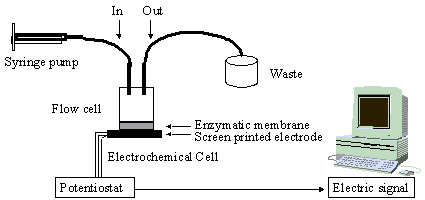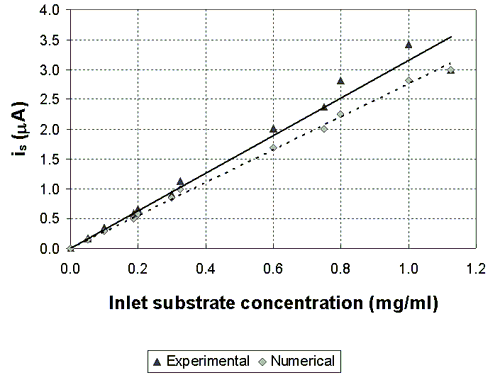

The ability to identify and measure accurately and rapidly the unknown concentration of substrate or to observe the activity of a specific enzyme is the objective of every sensor system. The combination of the sensor specificity to the enzyme and the electrochemical transducer has made this technique a suitable solution for numerous biological applications. Moreover, the electrochemical biosensors gained several advantages by using flow cells. The advantages include fast response time, relatively high signal to noise ratio, good sensitivity and small test volume (of the order of μl).
The present research examines numerically and experimentally the identification of substrate concentration in amperometric electrochemical flow cells. Three dimensional numerical simulations have been preformed for predicting the mass transfer processes in the vicinity of the cell using a realistic geometrical model of the cell. For the optimization of the inlet flow rate, numerical simulations and experiments have been preformed using identical substrate concentration (see fig. 1). The numerical simulation results were used to evaluate the species concentration distribution in the vicinity of the cell for predicting the electric current through the electrode. A good agreement was found between the numerical and the experimental electric current evolution values, especially for the higher substrate concentrations. The correlation coefficient was 0.98 in the higher substrate concentrations. A linear relationship was obtained between the inlet substrate concentration and the steady state electric current for both the numerical and the experimental results (see fig. 2). Once this linear relationship is established, the inlet substrate concentration based on the electric current through the electrode can be established.

Figure 1:
The experimental electrochemical flow sensor system

Figure 2:
The correlation of the experimental and numerical electric current versus the inlet substrate concentration